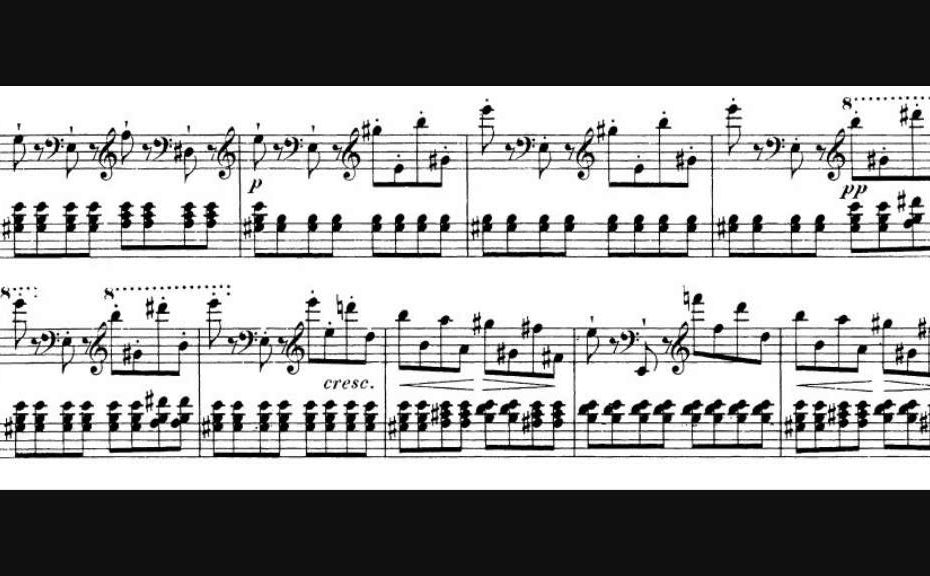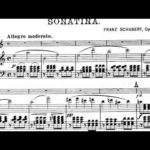– Composer: Franz Peter Schubert (31 January 1797 — 19 November 1828)
– Performer: Grigori Sokolov
– Year of recording: 2005 (Live in Amsterdam, The Netherlands)
Piano Sonata No. 20 in A major, D. 959, written in 1828.
00:00 – I. Allegro
16:26 – II. Andantino
26:00 – III. Scherzo: Allegro vivace — Trio: Un poco più lento
31:48 – IV. Rondo: Allegretto — Presto
This is Schubert’s penultimate piano sonata, written in September 1828—about three months before his death. It is one of three that he wrote after the death of Beethoven (19 March 1827), whose funeral he attended with Hummel. The passing of this great master was an important event in the life of Schubert, for though mourned the loss of the musician he greatly admired, he also perhaps felt somewhat liberated from the older composer’s dominance. Appropriately, each of these last three piano sonatas contain stylistic nods to Beethoven; in the case of this A major sonata, the Rondo is based on the finale (also a Rondo) of Beethoven’s Sonata No. 16 in G major.
– I. Allegro: In this movement, both the first and second themes are presented in ternary form. The exposition goes traditionally from tonic to dominant (E major), and even prepares the dominant tonality in the Classical fashion — through its own dominant, V of V — the only first movement to do so in the mature Schubert. However, at two points during the exposition, a series of modulations by major thirds (e.g. A major to F major) appears, generating a full turn through the circle of fifths, thus creating an illusion of forward harmonic movement, while actually ending in the same key in which it began. As in the previous sonata, the development section deals only with its own, new melodies and textures. Here, however, rather than developing the main thematic material of the exposition through successive modulations, the harmony constantly shifts back and forth between two tonalities — C major and B major (later replaced by B minor). Later on, a passage in the tonic minor appears, followed by the retransition, which here has the unconventional role of only shifting to the major mode to prepare the recapitulation, rather than fully preparing the tonic key (which in this case has already been previously established). The recapitulation is traditional — staying in the tonic, and emphasizing the tonic minor and the flat submediant (F major) as subdominant tonalities. The coda restates the first theme, this time in a much more ‘hesitant’ manner, pianissimo and with further allusions to subdominant tonalities. The movement ends with serene arpeggios; however, for the penultimate chord, Schubert chose a striking Italian sixth on ♭II, instead of the more usual dominant or diminished seventh chords.
– II. Andantino: in F-sharp minor, A–B–A form. The A section presents a lamenting, poignant melody, full of sighing gestures (portrayed by descending seconds). The middle section is of an improvisatory, fantasia-like character, with extremely harsh modulations and sonorities, culminating in C-sharp minor with fortissimo chords. After this climax, a recitative section leads to a serene phrase in the major mode (C-sharp major), which in turn leads (as the dominant of F-sharp minor) back to the A section, here somewhat transformed, with new accompanimental figuration.
– III. Scherzo: Allegro vivace — Trio: Un poco più lento. The B section of the scherzo juxtaposes two distant tonal realms — C major and C-sharp minor. The music moves in and out of these keys without any modulatory preparation, as if by improvisation. C major returns in the concluding A section, this time more tonally integrated into its A-major surroundings, by modulatory sequences. The trio is in D major, ternary form. Its middle section moves to F major.
– IV. Rondo: Allegretto — Presto: This lyrical rondo movement consists of almost relentless triplet movement and endless songful melody. Its form is a sonata-rondo (A–B–A–development–A–B–A–coda). The second thematic group is written in the traditional dominant key; however, it is very long, modulating through many different subdominant tonalities. The development section, in contrast, culminates in a long passage in C-sharp minor. This leads to a false recapitulation in F-sharp major, which then modulates to begin again in the home key. In the coda, the main theme returns fragmented, with full bar pauses, which lead each time to unexpected changes of key. This is followed by a concluding, agitated presto section, based on the final bars of the main theme.
This is one of Schubert’s most popular piano sonatas, enjoying currency on both the recital stage and in the recording studio. Ironically, the composer could not get this masterpiece published in the remaining months of his life. It would be published in 1839, though his reputation would not begin to grow appreciably until after 1856, when he was discovered and championed by English musicologist, George Grove.




